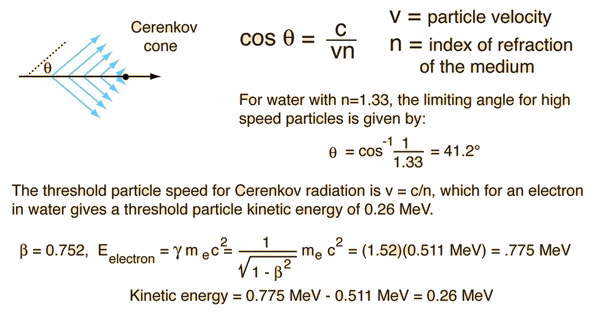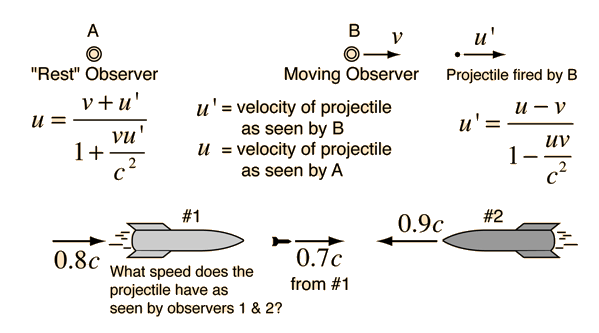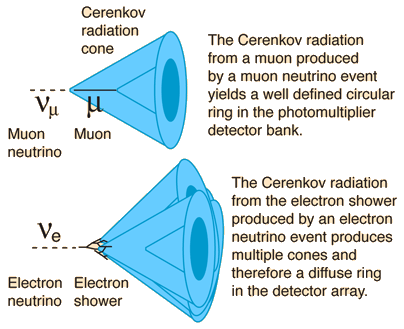Cerenkov Applications
Cerenkov radiation can be used to detect the occurrence of certain nuclear interactions. Such interactions can release large amounts of energy and eject particles at highly relativistic speeds. If these interactions take place in water or another clear substance, then the Cerenkov radiation emitted as the reaction products travel through the water can be detected by photomultiplier tubes. This kind of detection is to be used in the Sudbury Neutrino Observatory to detect neutrino interactions.
The Super-Kamiokande neutrino detector facility in Japan has 11,000 photomuliplier tubes in place to detect Cerenkov radiation and is able to detect and distinguish electron and muon neutrinos.
Measurements of particle speeds can be made by measuring the angle of the Cerenkov cone, like photographing ship wakes to measure ship speeds. A portion of the light emitted by the decelerated particle is coherent and is emitted at a characteristic angle

The total amount of energy appearing in Cerenkov radiation is small compared to the total energy loss by ionization as the particle enters the medium. According to Rohlf, a relativistic particle near the speed of light will lose energy at the rate of about 200 MeV/m, and of that loss only about 40 keV/m will be in Cerenkov radiation, about 1/5000 of the total.
Although the example given here is for electrons in water, applicable to the use of Cerenkov radiation for neutrino detection, Cerenkov radiation occurs for any charged particle which enters a material medium at a speed greater than the speed of light in that medium. The Cerenkov radiation is independent of the mass of the particle, depending only upon its charge and speed. Cerenkov radiation is emitted at all frequencies in the visible if it occurs in an optically transparent medium, but the energy per unit wavelength is proportional to the inverse cube of the wavelength. Short wavelengths are then preferred, and the visible color is described by Evans as "bluish white".
Early Cerenkov detectors used glass, lucite and mica as detector media. They all had indices of refraction around n=1.5, so the limiting Cerenkov angle was about 48°. Although the Cerenkov radiation can be produced at all forward angles less than the limiting angle as the particle slows down, in practice the emission is seen as a narrow cone with only a few degrees width. The particles slow down very quickly, so the radiation comes from a very short path length in the medium and a very short time interval (<10^-10 sec, Richtmyer, et al). The emission comes from discrete atoms at steps along the path, and is emitted coherently. As early as 1951, Mather reported the use of Cerenkov radiation for determining the energy of 340 MeV protons with an uncertainty of only +/- 0.8 MeV.
Analytical treatments of Cerenkov radiation were carried out by Frank & Tam and by Fermi.
|




